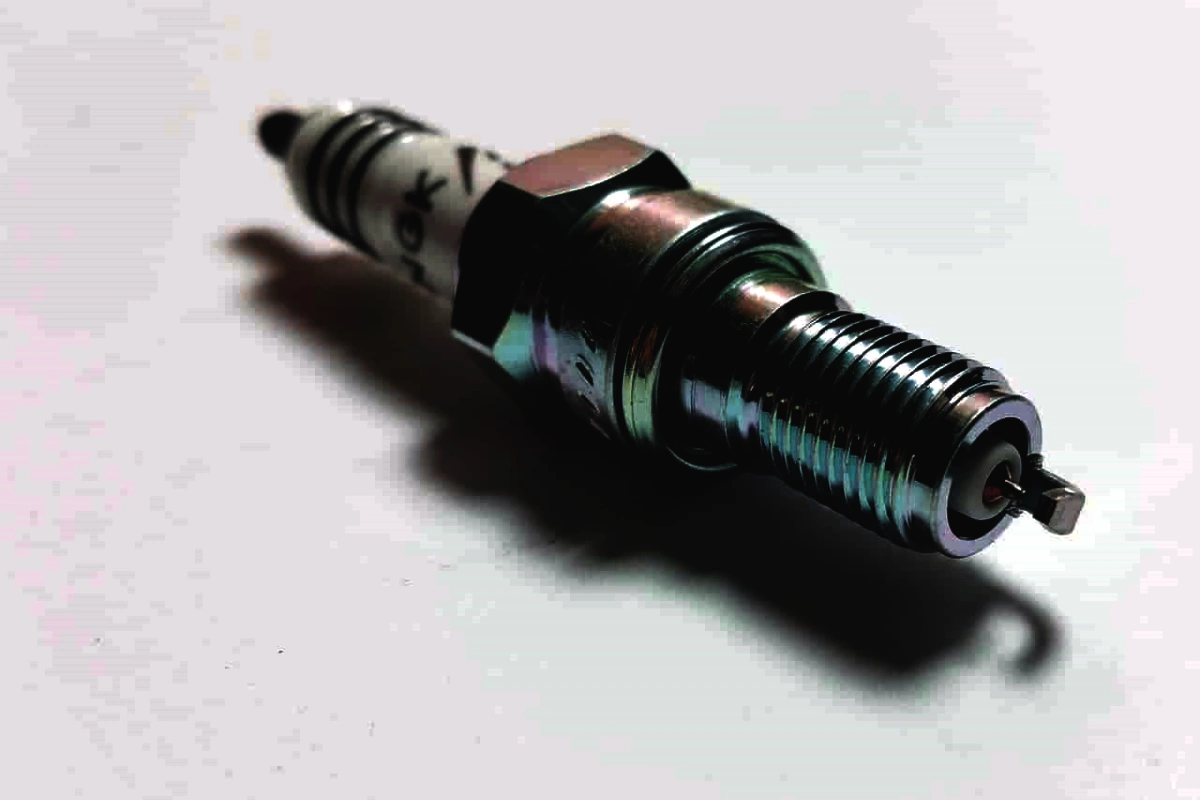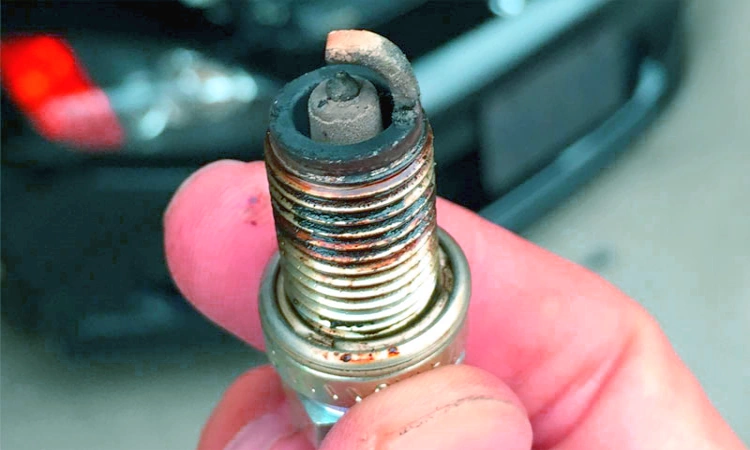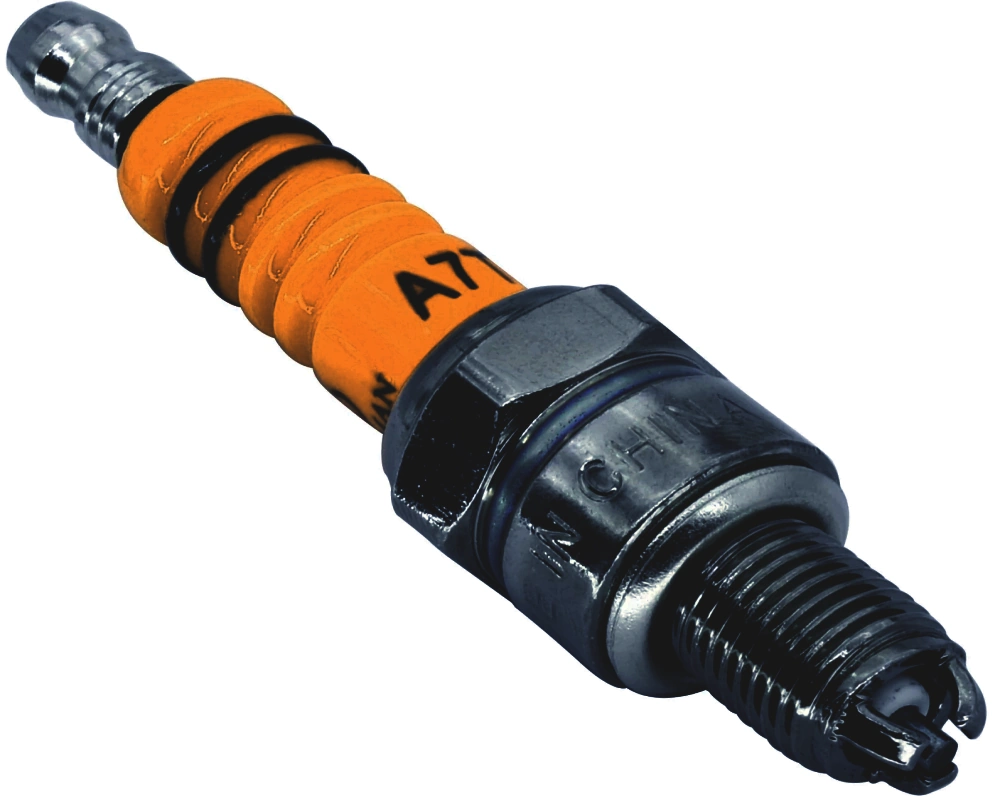If you’re like most ATV riders, you want to make sure your machine is running in top condition. And one of the key components to keeping your ATV running well is making sure you have the right spark plugs installed. The spark plug is a typical automotive maintenance item, and fortunately, they’re also reasonably priced and not overly difficult to change when necessary. Basically, they’re the ideal do-it-yourself job. There are a variety of different types of spark plugs available on the market, and it can be confusing trying to determine which type of plug is right for your ATV. So, what type of spark plugs do I Need for your ATV machine? Here are a few tips for the beginner.
What Are Spark Plugs Used For?
ATV spark plugs are used to create a spark that ignites the fuel-air mixture in the engine. With these little, but effective, plugs, an arc of electricity is generated between two leads that are not in direct contact but are close enough together so that electricity may jump the distance that separates them. Spark plugs, as well as the electric and timing equipment that drives them, are all components of what is known as the ignition system. Spark plugs, in general, are built of incredibly robust material and can endure millions of explosions until falling out or requiring to be changed. In the long run, the explosions and rust cause shorter or poorer sparks, which results in decreased engine performance and may cause additional difficulties such as misfiring or failure to fire. They’re an important part of the combustion process, and they need to be working properly in order for your ATV to run smoothly and efficiently.
Specifications of a Spark Plug
The three main specifications you need to consider when purchasing spark plugs for your ATV are the type of electrode (center or ground), the heat range, and the thread size.
1) The Electrode:
There are two types of electrodes: center and ground. The center electrode is the most common type, and it’s what you’ll find in most spark plug types. The ground electrode is located at the base of the plug, and it’s responsible for providing a good ground connection. If your machine has electronic ignition systems, you’ll need to use spark plugs with a center electrode that’s “resistor-type.” This type of electrode is designed to prevent interference from other electronics in your machine.
2) The Heat Range:
The heat range of the best spark plug is determined by the size and composition of the plug’s ceramic body. The larger the body, the greater the heat range. Spark plugs are designed to operate at a certain temperature, and if they get too hot, they can start to break down. So, it’s important to choose spark plug types with a heat range that’s appropriate for your machine and its operating conditions.
3) The Thread Size:
The thread size of a spark plug is the size of the threads on the plug’s base. It’s important to make sure you have the right thread size for your machine, or you could damage the threads on your ATV’s cylinder head when you try to install the new plugs.
The Various Types of Spark Plugs:
There are several varieties of spark plugs on the market, each with its own set of advantages and disadvantages.
1) Copper Spark Plugs:
When using this sort of spark plug, the center electrode is made of a copper core that has been coated in a nickel alloy. In order to produce a spark, it requires greater voltage than other spark plugs since it has the widest diameter. Because nickel alloy is a soft and not particularly durable substance, it will have to be updated more often than other types of spark plugs. Despite the fact that copper plugs have a lower lifespan, some automobiles are intended to use them.
2) Spark with Platinum Plugs:
While a single platinum spark plug material looks and operates in the same way as a copper spark plug, its core electrode is made of platinum discs welded to the tip, rather than just nickel alloy. The platinum plugs metal has a longer life span than the nickel alloy before it becomes damaged. Additionally, these plugs produce more heat, which helps to decrease carbon build-up. When purchasing a new automobile with a coil-on-plug igniting system, this is the material that is suggested.
3) Double Platinum Spark Plugs:
Platinum coats both the core and ground electrodes of double platinum spark plugs. This is more effective and durable, making these plugs an excellent option for a wasted spark igniting system, which places a greater strain on both electrodes than other ignition systems do. Each ignition coil in wasted sparking ignition systems burns two spark plugs at the same time, one from the compression stroke’s cylinder and another in the exhaust stroke’s cylinder. Because the air-fuel combination had already burned on the previous stroke, the spark in the latter is wasted. This ignition technology outperforms distributor ignition methods in terms of resistance to rain and dust.
4) Iridium Spark Plugs:
Iridium spark plugs have the greatest lifespan since they are stronger and more robust than platinum. These spark plugs feature a tiny center electrode, which means that they create a spark with less voltage than other spark plugs. As a result of these benefits, the price is more expensive. Many automobile manufacturers now use iridium spark plugs in most vehicles, also it is important to use iridium when changing the plugs rather than platinum or copper/nickel alloy.
The Advantages of Spark Plugs:
The following are some of the advantages of using spark plugs.
1) They Help to Prevent Detonation:
One of the main advantages of using spark plugs is that they help to prevent detonation. Detonation can cause serious damage to your engine, and it’s crucial to prevent it from happening. Spark plugs create a spark that ignites the air/fuel mixture in the engine, and if they’re not working properly, you may experience detonation.
2) They Improve Engine Performance:
Spark plugs play an important role in the combustion process, and when they’re working properly, they can improve engine performance. A good set of spark plugs will help your engine run more smoothly and efficiently.
3) They Help Reduce Carbon Buildup:
Carbon buildup is a common problem in engines, and it can cause performance problems and damage the engine. Spark plugs help to reduce carbon buildup by providing a spark that ignites the air/fuel mixture. This helps to keep the engine clean and running efficiently.
4) They’re Easy to Replace:
Spark plugs are relatively easy to replace, and most machines come with a set of replacement plugs. If you experience any problems with your spark plugs, it’s usually quick and easy to swap them out for a new set.
What Is a Spark Plug Gap and How Do You Check It?
A spark plug gap is the distance between the electrodes on a spark plug. It’s important to check and adjust the gap as needed because if it’s too large or too small, it can affect the performance of the plugs. Here’s how to check and adjust your spark plug gap:
- Disconnect the ignition coil wire from the spark plug.
- Use a spark plug gap tool to measure the gap between the electrodes.
- If the gap is too large, use a wire brush to clean the electrodes and adjust the gap accordingly.
- If the gap is too small, use a shim to widen the gap.
- Reconnect the ignition coil wire to the spark plug.
Video Credit- ChrisFix
9 Symptoms that Spark Plugs Need To Be Replaced:
1. Ongoing Maintenance:
You should always replace your spark plugs at the manufacturer’s recommended intervals. If you’re not sure when your spark plugs were last replaced, it’s a good idea to check them and replace them if necessary.
2. Slower Acceleration:
If your ATV is taking longer to accelerate, it may be a sign that your spark plugs need to be replaced.
3. Decreased Fuel Economy:
If you’re noticing a decrease in your fuel economy, it may be because of your spark plugs.
4. The engine is really noisy:
If your engine is making a lot of noise, it may be due to faulty spark plugs.
5. Difficulty Starting the Car:
If it’s taking longer than usual to start your car, it may be because of bad spark plugs.
6. Wires for the Spark Plugs:
If the wires for your spark plugs are corroded or damaged, it’s a sign that they need to be replaced.
7. Rusty Idling:
If your engine is idling erratically or has a strong smell of fuel, it may mean that your spark plugs need to be replaced.
8. Misfires in Engines:
In some cases, you may experience misfires in your engine. This could be a sign that your spark plugs need to be replaced.
9. Black Smoke from the Exhaust:
If you’re seeing black smoke coming from your car’s exhaust, it may be due to bad spark plugs.
What Causes Spark Plugs To Fail To Perform?
There are some reasons which can cause spark plugs to fail.
Oil in Combustion Chamber:
The entry of engine oil into the combustion chamber is a common source of spark plug difficulties. The base of the spark plug might get filthy and unclean if oil spills into the combustion tube, causing the spark plug to break prematurely. Take attention if your ATV begins to burn oil since this can be an indication that spark plugs are damaged and will have a reduced lifespan as a result. This is especially true in older automobiles.
Overheating:
The excessive heat of the spark plug might result in the spark plug failing prematurely. Several factors, such as pre-ignition and a defective cooling system, might contribute to excessive heating. Pre-ignition can result in excessive heat being generated in the combustion chamber, which can cause the spark plugs to break. Additionally, if the cooling mechanism isn’t operating properly, it might lead the engines and spark plugs to burn, which is dangerous.
Carbon Accumulation:
When there is black, dried smoke on the electrode and insulator tip, it indicates that the spark plug has been fouled with carbon. In addition to reducing the lifespan of a spark plug, carbon accumulation can result in hard starts, lower acceleration, engine misfires, and the triggering of the check engine light. A filthy air filter, excessive low-speed driving, a too-rich fuel/air combination, dirty fuel injectors, and idling your vehicle for an extended period of time are all possible reasons for a carbon-fouled spark plug, as well as other factors.
Incorrect Spark Plug Gap:
The spacing between the middle and side electrodes of a spark plug must be accurately set in order to provide maximum engine performance and efficiency. With suitable spacing, you can ensure that the arcing takes place at the proper voltage, igniting the fuel and generating the combustion that allows the engine to operate. If the spark plug gap is not properly adjusted, more stress may be exerted on the spark plug tip, causing it to degrade and burn out early.
Changing Spark Plugs: Some Points to Consider
1) Prioritize safety:
When changing your spark plugs, always prioritize safety by ensuring that the engine is turned off and that all ignition sources (e.g. flame, sparks) are eliminated. Working on an ATV that’s turned on can be very dangerous, as you run the risk of getting injured by the engine.
2) Spark Plug Wire Extraction:
The process of extracting the old spark plugs can be difficult, as the wires tend to become stuck. A pair of pliers can help in removing the old plugs, but take care not to damage the wires in the process.
3) Unplug the Coil On Plug:
Before you start working on the spark plugs, it’s important to unplug the coil on the plug. This will help to avoid any accidental sparks that could cause an explosion while you’re working.
4) Unscrew the Plug:
Use a spark plug socket to unscrew the old plugs. Be careful not to overtighten the plugs, as this can damage them and make it difficult to remove them later on.
5) Insert New Spark Plugs:
Be sure to insert the new plugs in the proper orientation, as they can be easily damaged if inserted incorrectly. The metal electrode should be facing the engine, while the porcelain insulator should be pointed toward the sky.
6) Replacing the Spark Plug Wires or Ignition Coil:
If you’re replacing the spark plug wires or ignition coil, it’s important to follow the spark plug manufacturer’s instructions for installation. Improper installation can lead to a host of problems, including misfiring and decreased engine performance.
7) Start the ATV Engine:
Once the new plugs are in place, start the ATV engine and allow it to run for a few minutes. This will help to seat the plugs and ensure that they’re working properly.
FAQ
1) When should I change my spark plugs?
Spark plugs should be replaced at the manufacturer’s recommended intervals.
2) What type of performance gains can I expect if I switch to spark plugs?
You should experience improved engine performance with a new set of spark plugs.
3) What is the function of the metal in a spark plug?
The metal in a spark plug helps to conduct electricity from the ignition coil to the electrodes.
4) Is it Possible for Me to Change My Own Spark Plugs?
Yes, it is possible to change your own spark plugs. Most machines come with a set of replacement plugs.
5) How do I put in my spark plugs?
Replacing your spark plugs is a relatively easy process. Most machines come with a set of instructions on how to do it. You can also find instructional videos online.
6) What are the benefits and drawbacks of using a copper spark plug?
The benefits of using a copper spark plug are that it has a high heat resistance and can withstand corrosion. The drawbacks are that it is more expensive than other types of plugs, and it can be difficult to find in some areas.
7) What Is the Cost of Replacing Spark Plugs?
The cost of replacing spark plugs can vary, depending on the make and model of your vehicle. You can expect to pay between $50 and $200 for a new set of plugs.
8) What’s the deal with platinum spark plugs?
Platinum spark plugs are more expensive than other types of spark plugs, but they offer a number of benefits. They have a longer lifespan than other plugs, they’re less likely to corrode, and they provide better performance.
9) What happens if I don’t properly gap the spark plugs?
If you don’t properly gap the spark plugs, you may experience reduced engine performance and efficiency. Additionally, the stress exerted on the spark plug tip may cause it to degrade and burn out prematurely.
10) How can I choose the finest material for my spark plugs?
When choosing a spark plug, you should consider the make and model of your vehicle, as well as the type of driving you do. You should also take into account the cost and availability of the different types of plugs. If you’re not sure which type of plug to choose, ask a mechanic for advice.






